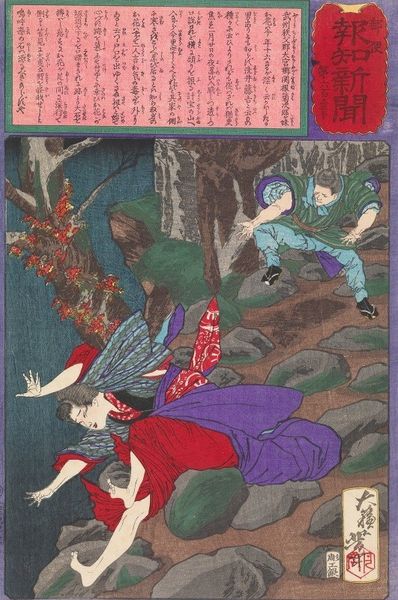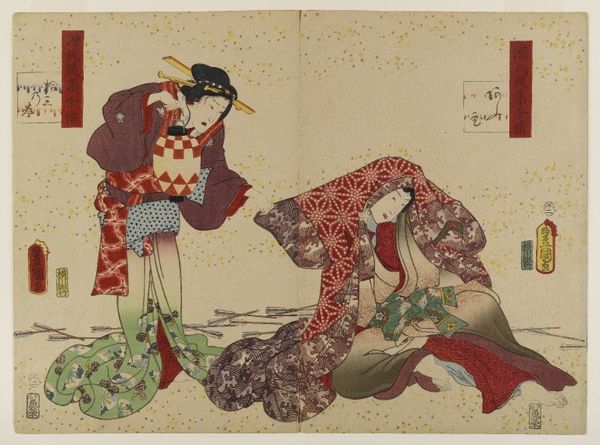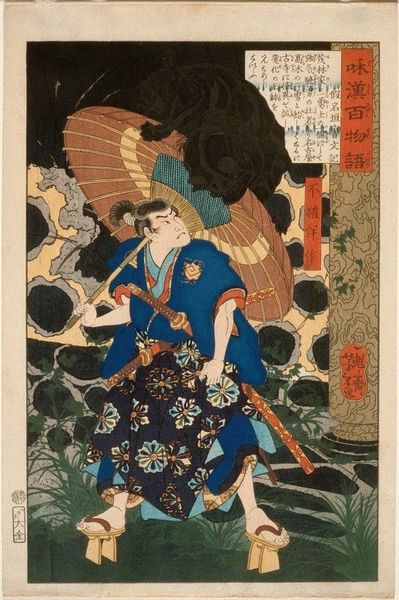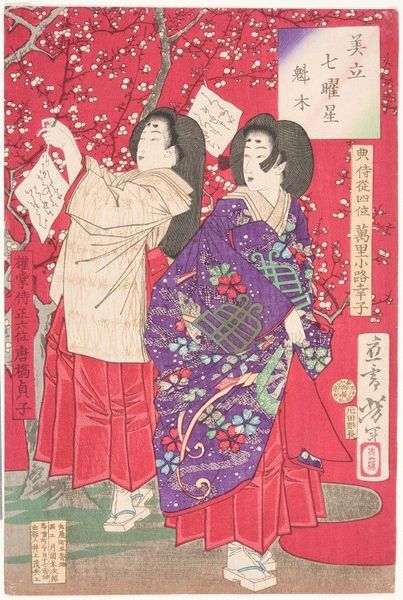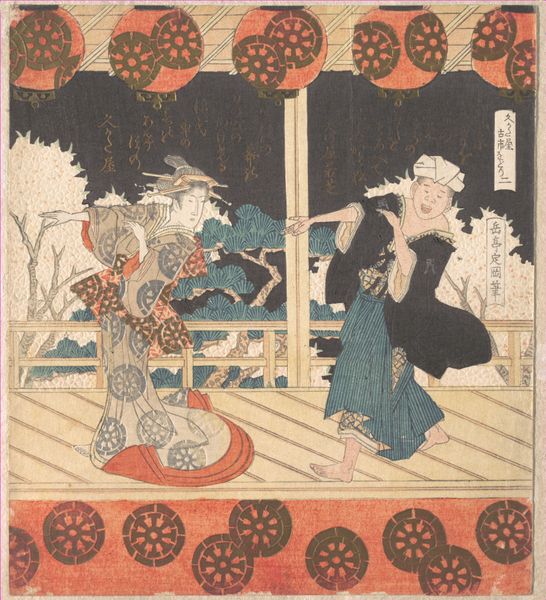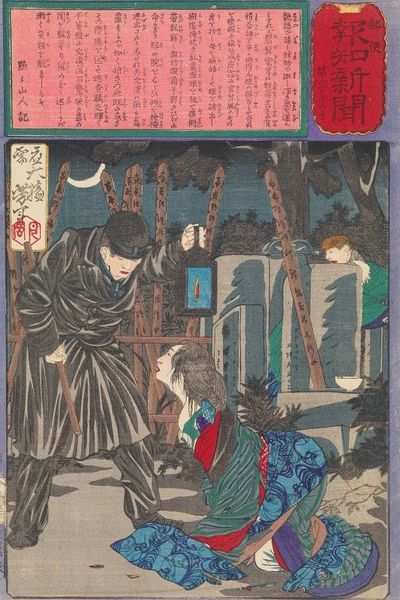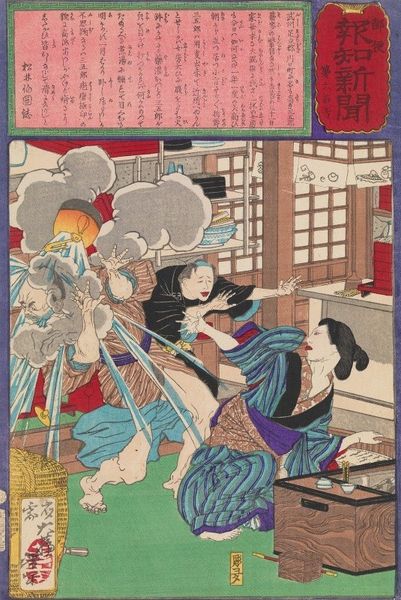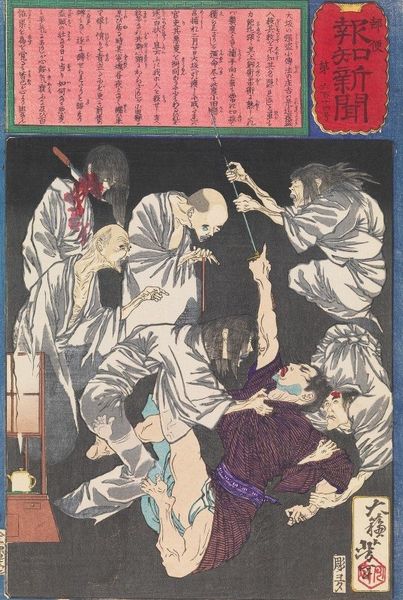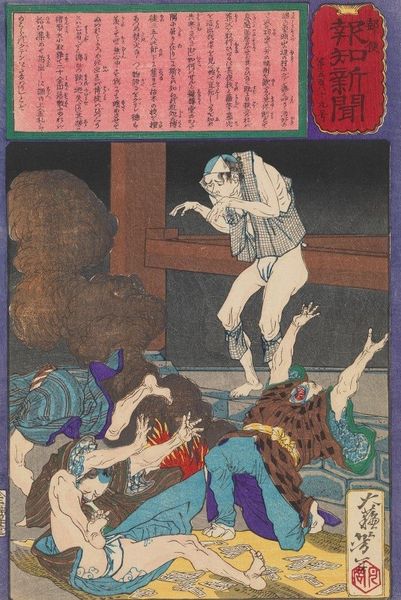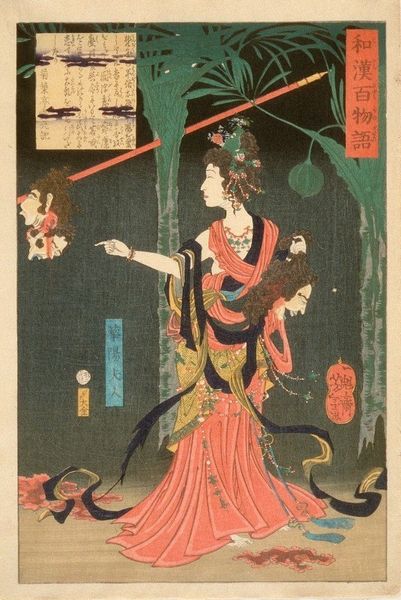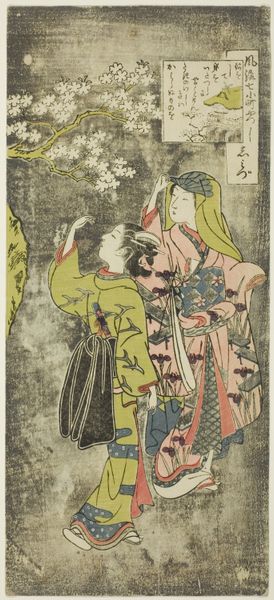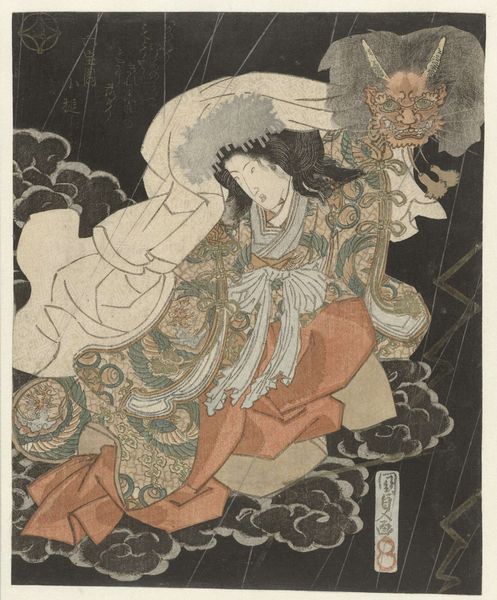
Two Women of Nojiri Who were Robbed, Tied to Trees, and Eaten by Wolves 1875
0:00
0:00
Copyright: Public Domain: Artvee
Curator: Yoshitoshi’s woodblock print, made in 1875, is titled "Two Women of Nojiri Who Were Robbed, Tied to Trees, and Eaten by Wolves." Editor: My first impression? Utter horror, to be frank. The jagged lines create a sense of disquiet, amplified by the cold, nocturnal color palette. And the disfigurement depicted is gruesome! Curator: Indeed, the horror is palpable. But note the visual grammar here: the victims’ bodies are rendered with anatomical precision, juxtaposed with the stylized violence. The use of line to define form and space, combined with a high level of detail… Editor: Hold on. We cannot detach this image from its historical implications. This image wasn’t created in a vacuum; it's responding to social unrest. The Meiji Restoration was a period of tumultuous change and rapid Westernization—Yoshitoshi often reflected on the dark side of progress in his work, and was likely aware of the implications of depicting violence, especially against women. The vulnerability captured isn't just aesthetic; it mirrors the destabilization experienced in Japanese society. Curator: True, Yoshitoshi was no stranger to the socio-political tensions of his time. Yet, focusing on form again, notice how the moon’s ethereal glow casts an unsettling light, framing the women's predicament while highlighting the brutal frenzy below. The bright red emphasizes violence and also is skillfully placed in the whole composition, working as focalizers. Editor: I find the textual elements above and to the left particularly telling; that it was explicitly connected to contemporary news via print speaks volumes. News of this event turned into the artistic experience of a visual tragedy speaks about objectification of such act. Consider what this meant for the accessibility of such horror to a widespread 19th-century audience. Curator: A valid observation. It certainly transcends simple representation to engage the viewer with a complex, staged spectacle that demands analysis of color theory, perspective and balance in composition. It all boils down to the emotional intent captured with expert skill, which stands out through objective assessment, while your focus enhances an interpretative lens related to gender violence and visibility. Editor: Indeed. Approaching art through social responsibility allows a rich awareness of what that artwork communicates and makes us reflect.
Comments
No comments
Be the first to comment and join the conversation on the ultimate creative platform.
